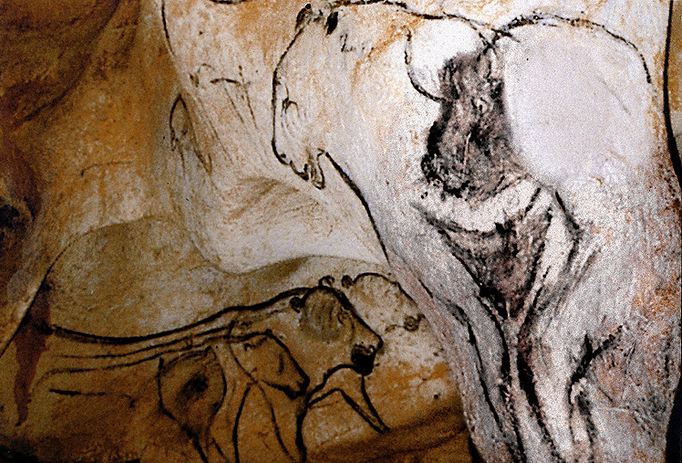Something stunningly poignant, modern, and significant about the fact that some of the greatest and earliest human art work can only be viewed in the form of a replica. In France, a replica of the Chauvet cave and paintings has been built so people can see what the paintings looked like in situ without destroying the actual art, which has existed for tens of thousands of years in darkness but is threatened by people entering the cave.
In discovery is the beginning of destruction.
The real thing cannot be seen for, in viewing it, we destroy it.
Art that is destroyed by watching.
To know is to demolish.
To experience is to commence the decomposition of reality.
What is true can neither be approached nor referenced except at a sterile distance.
We are not threatened by experience, but what we experience is in deep peril from us.
Impermanence.
Consciousness is the production of replicas of the real.
We live in a reproduced universe.
Do you really want to go half-way around the world to look at fake art?
Do you really want to live in a fake world?
Think about it.
—Douglas Glover
[youtube]https://www.youtube.com/watch?v=RGQ2ZddXIUk[/youtube]
[youtube]https://www.youtube.com/watch?v=ZPoGk1dUWiI[/youtube]
And here is a clip from Werner Herzog’s film Cave of Dreams.
[youtube]https://www.youtube.com/watch?v=RcAwlnhRn2g[/youtube]

I loved Herzog’s film; and Doug’s aphoristic thoughts on the peril to art of consciousness triggered a number of associations. Though Hegel was, on one level, praising the capacity to “know” and to “watch,” his famous image also casts an elegiac and belated eye: “The owl of Minerva flies only at twilight.” By the time we can “know” something (art, civilization itself), it has passed from its meridian–over-ripe, perhaps even destroyed by hyper-consciousness. When Yeats wrote that “Man is in love and loves what vanishes,” he wasn’t saying anything so trite as that we love things and then they disappear; he meant that we most cherish precisely those things we know are doomed to vanish. In his last, and great, poem “The Broken Tower,” Hart Crane goes beyond the already haunting ideas that “art is destroyed by watching”:and that “to know is to demolish.” Close, at this point, to his suicidal leap into the Gulf, Crane suggests that the price of the creation of art and beauty is self-destruction. “The bells, I say, the bells break down their tower.”
Hart Crane makes the heart stop. Thanks, Pat. Also thanks for not scorning my whimsy. I stumble with awe when you start to associate. 🙂
You raise a valid question. At least they are doing it right. A friend of mine creates mixed media paintings inspired by American Indian petroglyphs and pictographs. He also has a series inspired by his trip to Lascaux. I have some poetry inspired by his work. Three will appear next month I believe and two can be found here (below the piece about Cornell):http://www.paintersandpoets.com/2015/02/satch-dobrey-presents-stuff-of-dreams.html
“The spirits tell us
to make waves of passing, carve in rock,
sing and dance.”
Thanks, Satch.
Some (cave-)deep and intriguing queries here! It seems the world is becoming a theme park of itself.
My own associations swing to a recent excursion in Sri Lanka to the famous Buddhist caves at Dambulla. At the foot of the hill, next to the parking lot, Japanese developers have erected a gigantic, uber-chintzy theme-park version of the caves, not to preserve the originals but, I suppose, to save tourists the trouble of mounting dozens of stone steps, and perhaps to attempt to do it all bigger and more grandiose. Of course, the further irony is that even in the original caves with their stunning paintings and sculptures, the encounter is overlaid by the continuous lines of tourists (like me) filing in and out, dutifully clicking our photographs in a vain attempt to record what we barely took time to absorb in the authentic moment. (For more on this, see the end section of my blog post, “On the Way to Buddha’s Tooth” – http://bit.ly/1PH1M1W )
Nowick, Yes, “a theme park of itself” — what a world. See also Peter Carey’s novel Illywhacker for a similar theme attached to Australian history.